The London Chestnut Harvest- 10.17.12
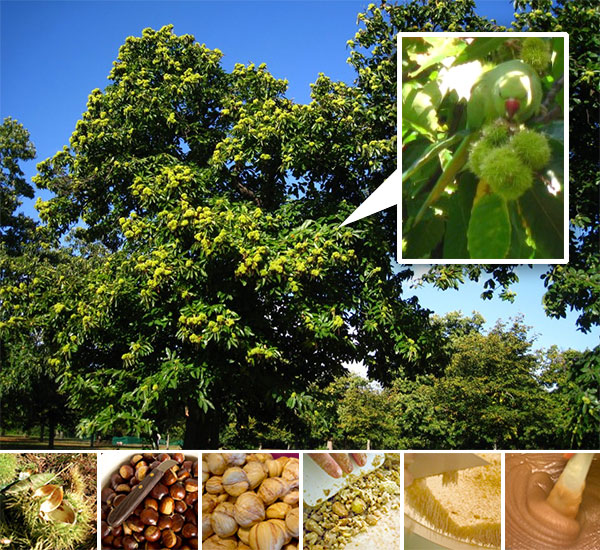 The latest from London-based editor and resident zoologist, Justine Aw.
The latest from London-based editor and resident zoologist, Justine Aw.
While most of the rest of the country is caught up in the Apple Harvest, we have a slightly more unusual harvest at this time of year, chestnuts. Chestnuts aren’t everywhere in the city, but where they are, they can’t be missed. Native to Japan and China, some of London’s tree are over 400 years old, having been planted primarily as decorative trees. The trees are heavy with nuts, which start off in tennis ball green balls of excruciatingly sharp spikes that mature into a mellower brown and when that happens, there’s a bit of a frenzy. Not just from human collectors (of which there are a fair few!), but also from squirrels, parrots and other wildlife as the trees unleash literally tons of food!
Processing chestnuts is by far the most time-consuming, labor-intensive and absurd culinary activity we’ve ever taken on (this from a couple that make their own marshmallows and ice cream from scratch), but it’s also one of the most satisfying transformations from tree to delicacy I’ve ever attempted!
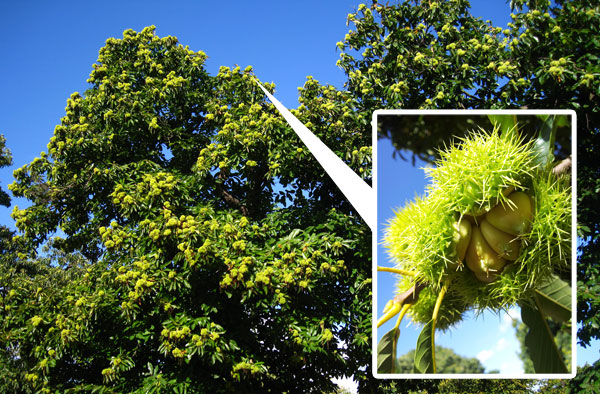 Still a week or so off, the whitish-green nuts turn the characteristic chestnut brown as they mature. At this stage, they are tucked tight up inside their tennis green balls of spikes, which are punishingly sharp.
Still a week or so off, the whitish-green nuts turn the characteristic chestnut brown as they mature. At this stage, they are tucked tight up inside their tennis green balls of spikes, which are punishingly sharp.
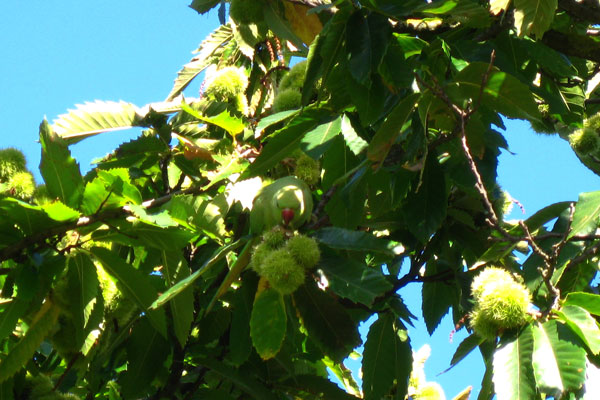 A ring-necked parakeet enjoying the bounty! When the parrots carelessly hurl them about (from a height of about 4 storeys), they really can hurt and the translucent splinters are not forgiving!
A ring-necked parakeet enjoying the bounty! When the parrots carelessly hurl them about (from a height of about 4 storeys), they really can hurt and the translucent splinters are not forgiving!
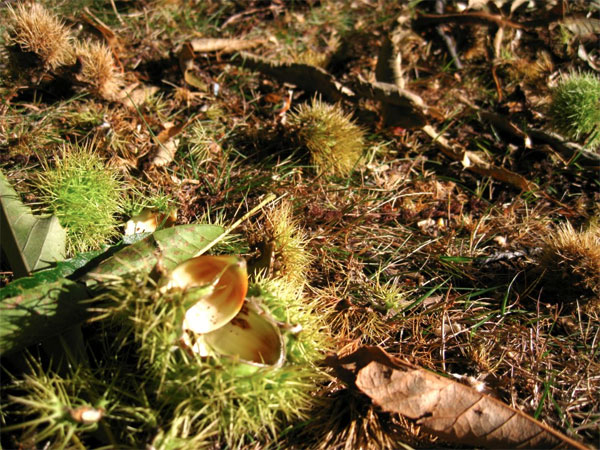 The color of the nuts begin to change as they mature. Here you can see an opened outer portion and sea of empties behind. You can’t help but feel excited at the sudden bounty. Birds and mammals are all scrambling to get their share (oh and you’ve got to fend off competition from molds and invertebrates too!).
The color of the nuts begin to change as they mature. Here you can see an opened outer portion and sea of empties behind. You can’t help but feel excited at the sudden bounty. Birds and mammals are all scrambling to get their share (oh and you’ve got to fend off competition from molds and invertebrates too!).
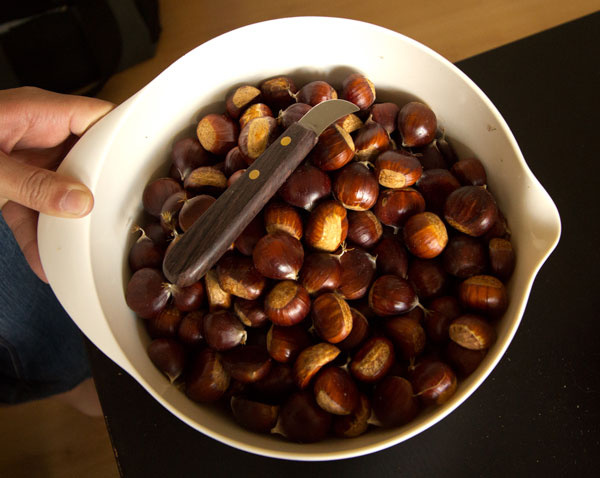 These beauties within are what we’re after and the starting point for delectable creme de marrons and marrons glacés. They are smaller than French or Italian chestnuts from the supermarket, but the flavor is more intense than supermarket chestnuts.
These beauties within are what we’re after and the starting point for delectable creme de marrons and marrons glacés. They are smaller than French or Italian chestnuts from the supermarket, but the flavor is more intense than supermarket chestnuts.
To turn chestnuts into creme de marrons and marrons glacés, you need to be just a little bit crazy to undertake the whole process and it’s not the sort of thing you can rush! Making creme de marrons takes the better part of a day and marrons glacés take four days (though they’re substantially less labor intensive than creme de marrons). If you’re put off by the hours of peeling, simmering and stirring, don’t worry, tree ripened and roasted, they’re delicious too, but if you’re just crazy enough, the rewards are incredible!
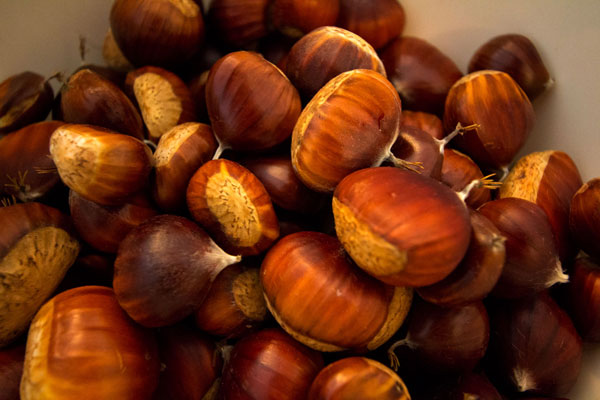
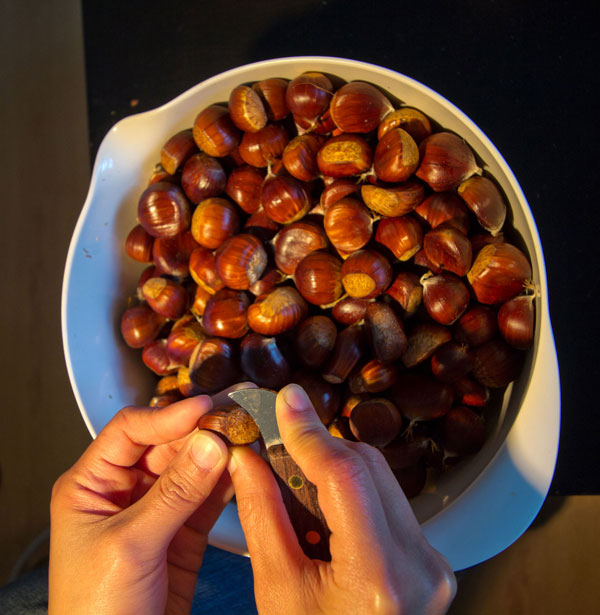 The first step to make creme de marrons is to remove the outer husks of the chestnuts, stripping them down to their papery inner skins (when making marrons glacés, we first boil the nuts before peeling).
The first step to make creme de marrons is to remove the outer husks of the chestnuts, stripping them down to their papery inner skins (when making marrons glacés, we first boil the nuts before peeling).
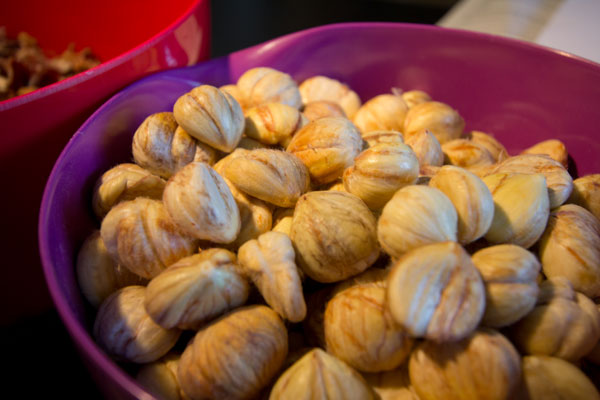 It seem an insurmountable task when you first start, but with a good chestnut knife (or paring knife), this bowl took about 40 minutes.
It seem an insurmountable task when you first start, but with a good chestnut knife (or paring knife), this bowl took about 40 minutes.
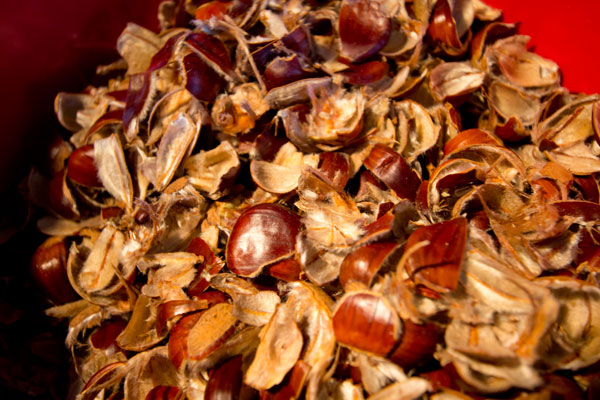 A bowl of husks is always satisfying though!
A bowl of husks is always satisfying though!
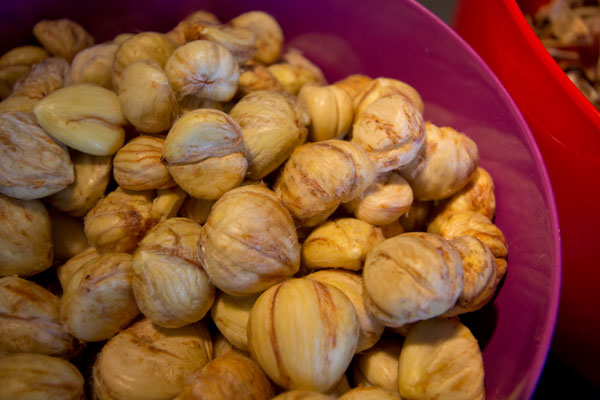
The next step is to simmer the nuts (in their skins) for about an hour in water with lemon zest. They should smell delicious and smooth to a paste when rolled between your fingers. It’s then time to remove the inner skins (the most time consuming and fiddliest part by far!) again using a knife.
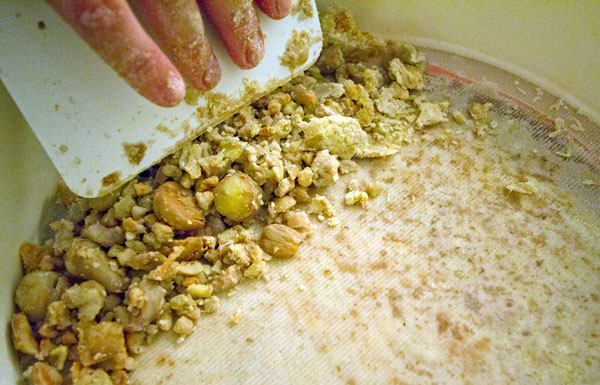 We then press the peeled nutmeat through a fine sieve (the finer the sieve, the smoother the result!), we like a 0.5mm mesh drum sieve.
We then press the peeled nutmeat through a fine sieve (the finer the sieve, the smoother the result!), we like a 0.5mm mesh drum sieve.
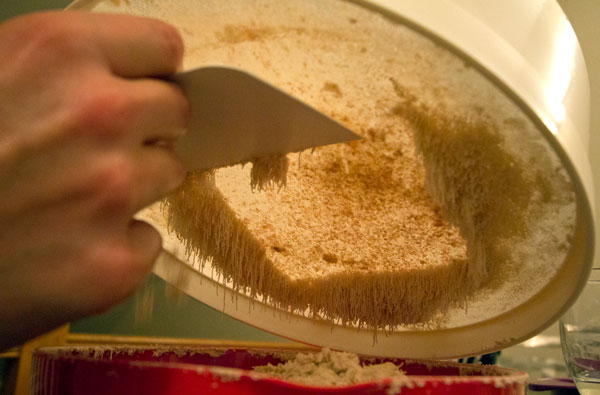 After all the struggles of the peeling, sieving the nuts is great fun, creating hairlike strands of chestnut. Somehow it reminds me of the childhood Playdoh hair salon as you extrude the paste!
After all the struggles of the peeling, sieving the nuts is great fun, creating hairlike strands of chestnut. Somehow it reminds me of the childhood Playdoh hair salon as you extrude the paste!
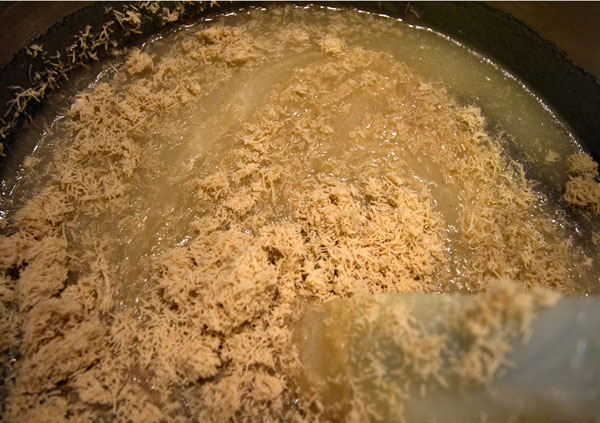 Once sieved, the chestnuts are added to a sugar syrup. It looks quite horrible when you start, but fear not and carry on stirring!
Once sieved, the chestnuts are added to a sugar syrup. It looks quite horrible when you start, but fear not and carry on stirring!
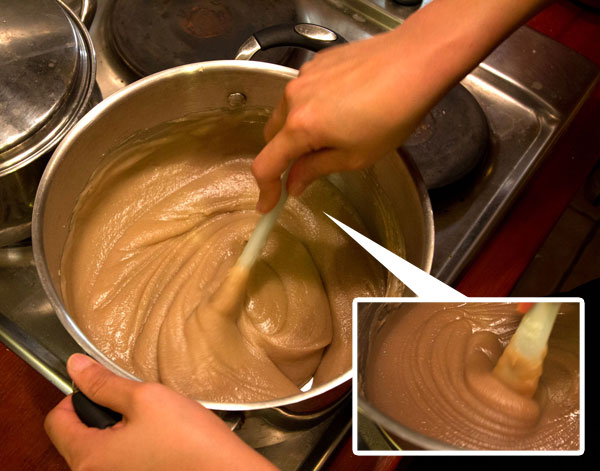 After a few moments of patient stirring, the pot suddenly transforms into an ultrasmooth paste, which darkens as it cooks.
After a few moments of patient stirring, the pot suddenly transforms into an ultrasmooth paste, which darkens as it cooks.
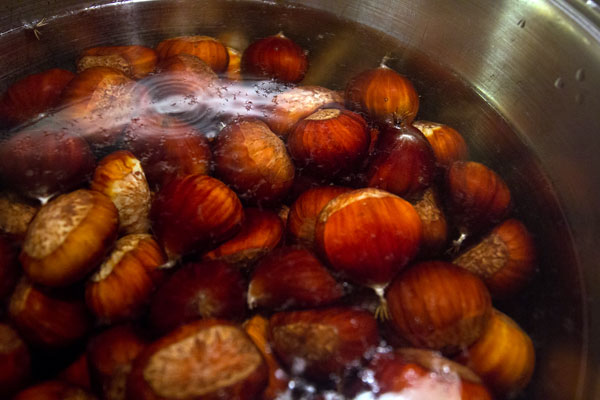 When making marrons glacés, we first boil the chestnuts until just softened, the peel off both outer and inner skins (together where possible!). The peeled nuts are then simmered in sugar syrup and soaked and boiled over four days until the syrup is dissolved.
When making marrons glacés, we first boil the chestnuts until just softened, the peel off both outer and inner skins (together where possible!). The peeled nuts are then simmered in sugar syrup and soaked and boiled over four days until the syrup is dissolved.
 The first batch of 2012 marrons glacés on the morning of their fourth day. Already delicious!
The first batch of 2012 marrons glacés on the morning of their fourth day. Already delicious!
Here’s how they are produced commercially:




I love chestnuts but they are soo difficult to peel. I just cut off a tiny bit off the top and a little bit off the bottom and put them in a hot oven for 20 minutes. I admire your patience.
~Anna@BohaGlass
----- Anna Kirsen 21.10.12 14:23